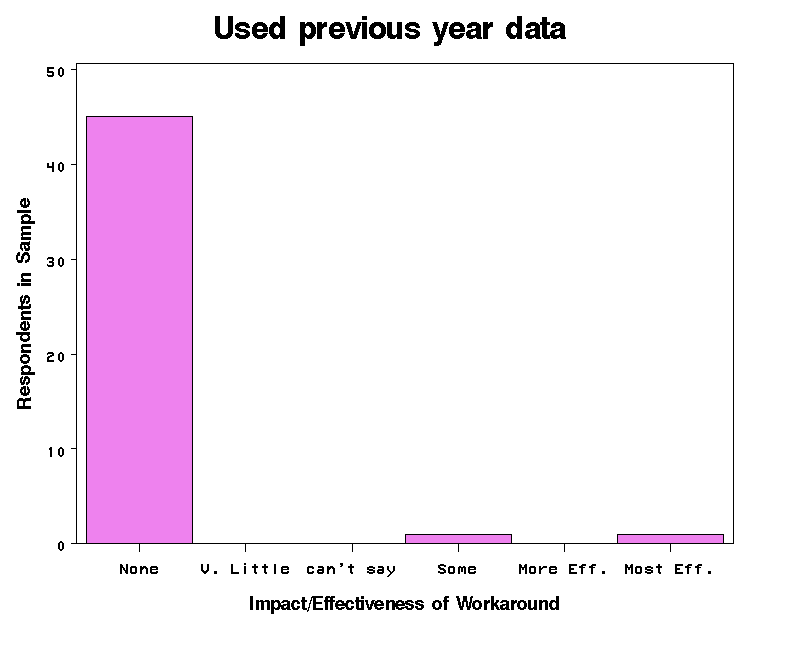
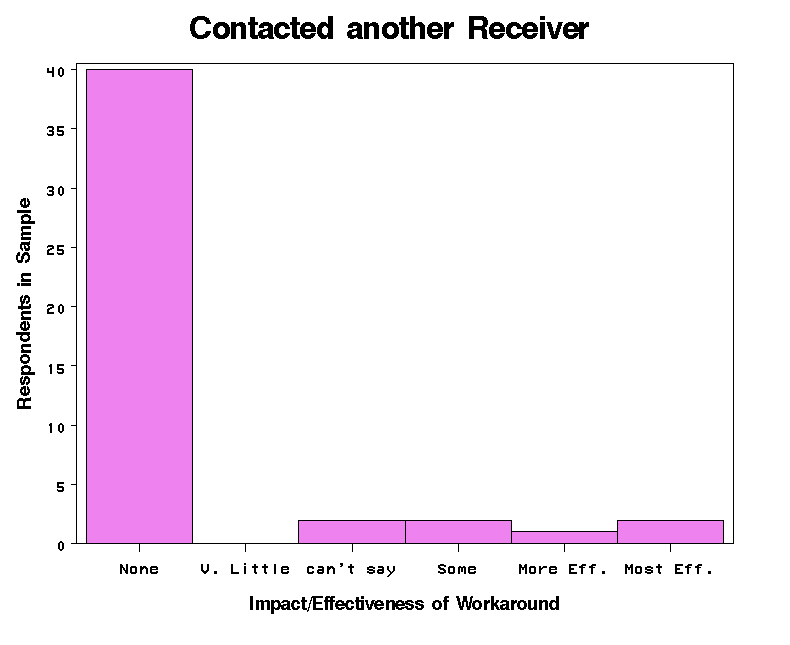
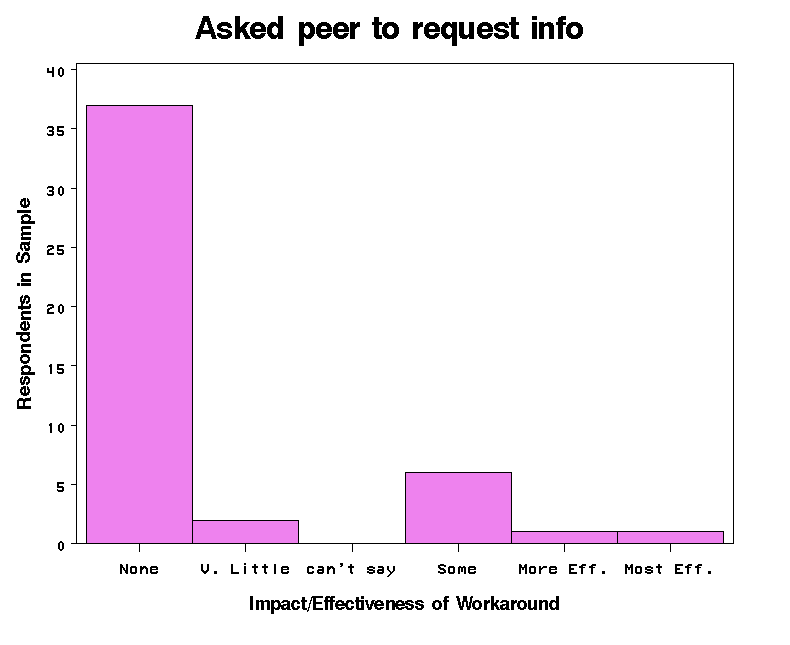
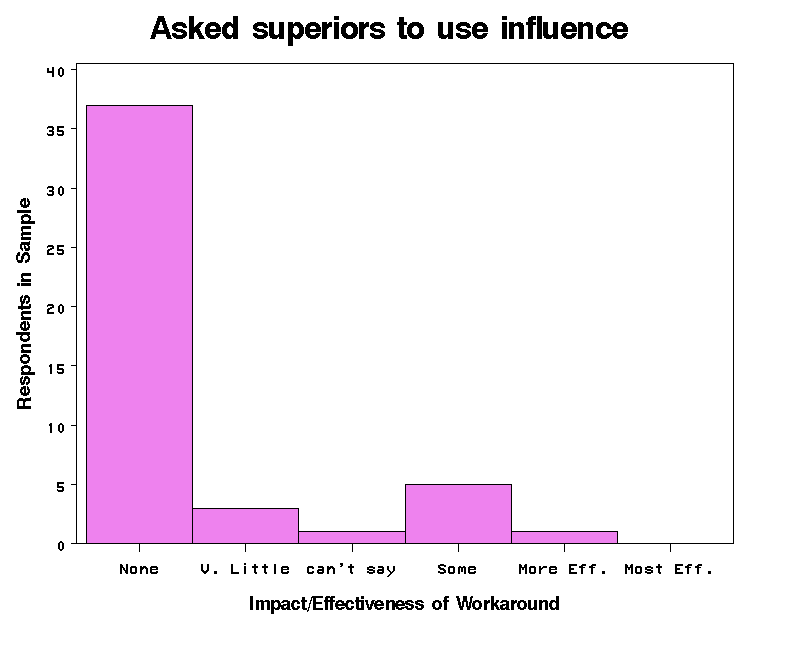
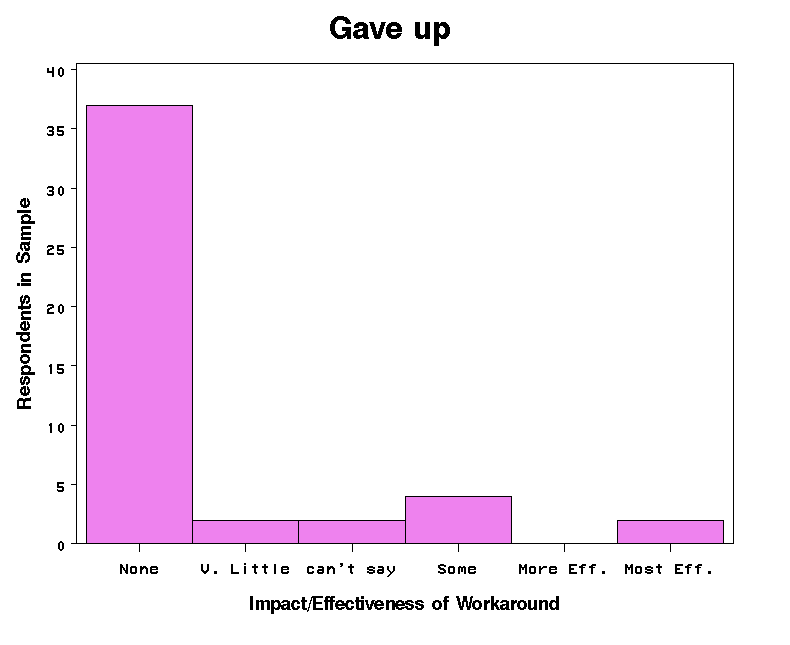
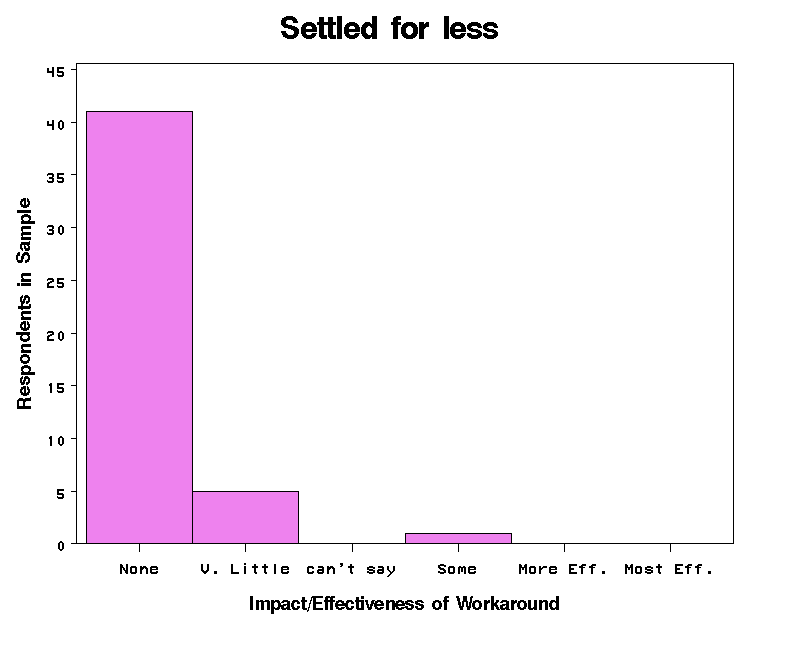
Workaround Frequency
Hypothesis 8. When participants did not find a solution to intercultural business communication via email, they most frequently used a workaround (WA), meaning they used less current data obtained previously or contacted a different receiver.
Recall the workarounds are:
C2a2 work around – used previous year´s data
C2b2 work around – contacted another Receiver
C2c2 work around – asked peer to request info
C2d2 work around – asked superiors to use influence
C2e2 work around – gave up
C2f2 work around – settled for less
Workarounds were not used in most cases. The workarounds mentioned in hypothesis 8 were the least used of all workarounds, and were of questionable efficacy (see effectiveness discussion below). The absolute frequency of workarounds employed are as follows:

Again we are testing the hypothesis that the frequency of employed workaround is greater than 50%, the random frequency test. This allows us to quote a significance level to large percentage of workaround useage. Since the workarounds were used so infrequently, none were significant. Note that requesting supervisor involvement was used twice as often as contacting another receiver, except the latter workaround is not likely to help since the communication problem was with the original receiver, and the problem may have been discovered too late. Additionally, the frequency of "giving up" is also high, but that it should not positively impact a solution.
Effectiveness of Workarounds. The effectiveness measure defined on the solutions employed resulted in "no effective workarounds." Recall this measure was determined by selecting the self-reported effectiveness at levels 4 and 5 (Effective to Most effective) which exceeds the marginal or non-effective workarounds, as read from the frequency histograms. Since none of the workarounds were considered "very effective", we instead resort to a lower standard of "at least somewhat effective," or including levels 3,4 and 5.
With this measure each of the workarounds are at least somewhat effective except for C2a2 (used previous year´s data) and C2f2 (settled for less). The somewhat effective workarounds better match their useage above, unlike the case for the Solutions.
The workaround effectiveness histograms follow. As in the case of solutions employed, the effectiveness scale for workaround employed was supposed to have only responses {0,1,3 and 5}, the data came back {0,1,2,3,4 and 5}, yielding a 6-step scale which we implement as follows:
5 = most effective workaround
4 = More effective
3 = some postive effect on the solution
2 = hard to tell
1 = very little impact on the solution
0 = no impact on the solution
 |
 |
 |
 |
 |
 |
[ DISCUSSION ]
If additional information is needed, please contact dobelman@stat.rice.edu